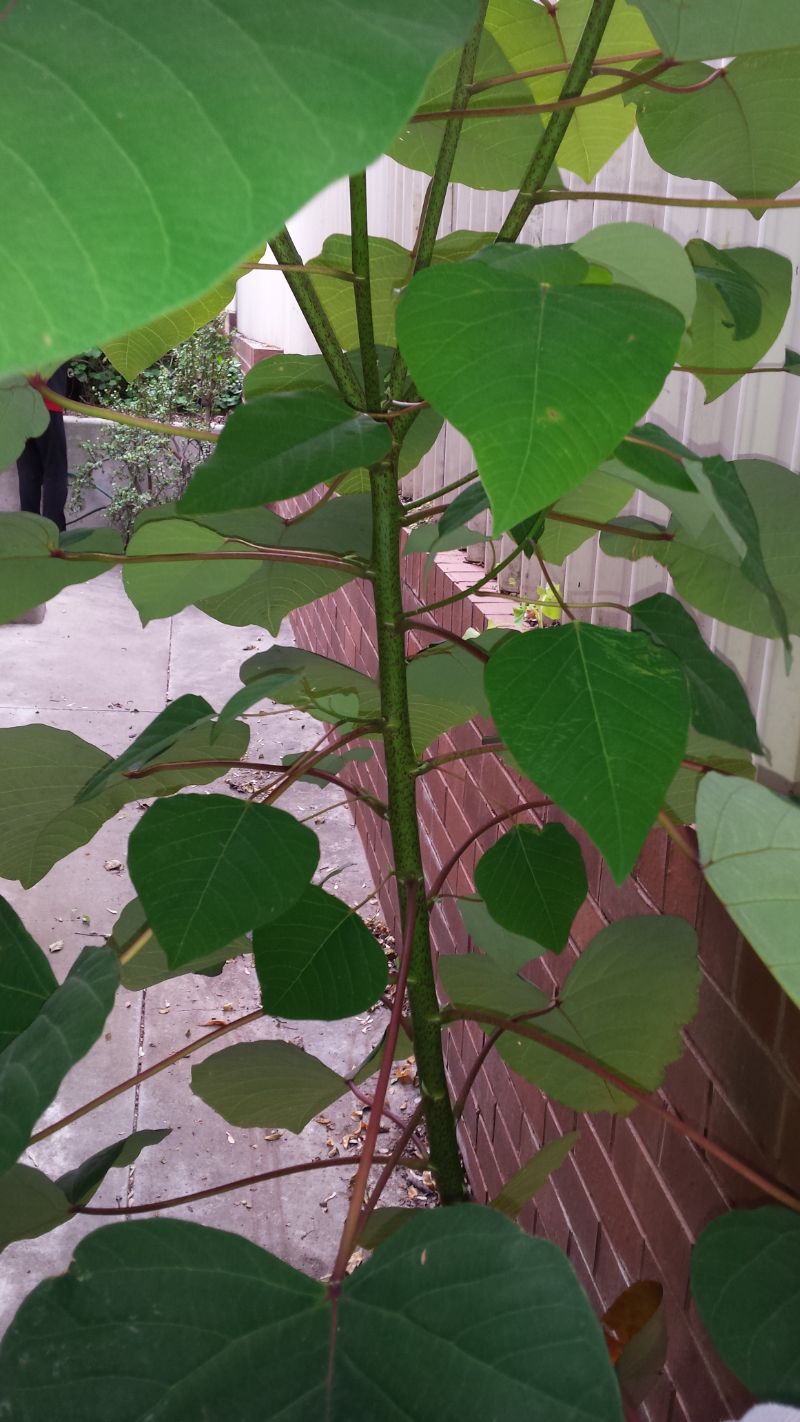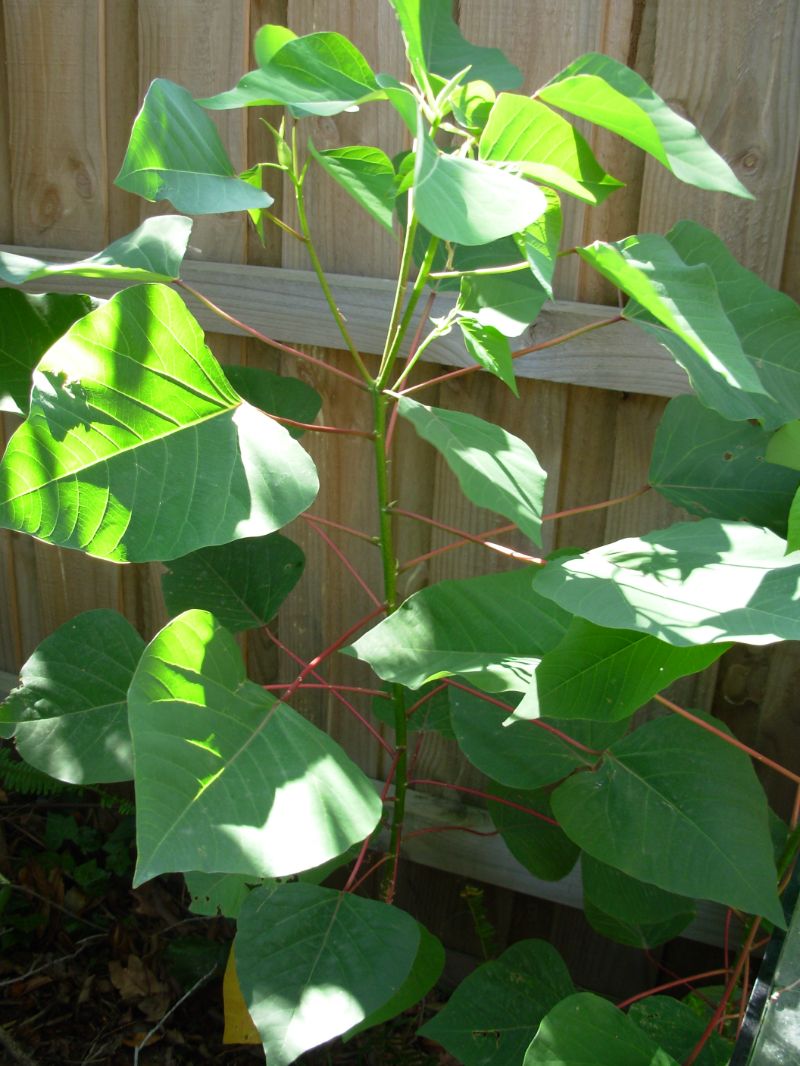Knotweed

Knotweed (Fallopia japonica, Fallopia sachalinensis, Fallopia x bohemica) is a State prohibited weed.
If you find knotweed
If you think you have seen knotweed, please contact us by:
- completing this form
- calling our Customer Service Centre on 136 186, or
- emailing weed.spotters@agriculture.vic.gov.au
Please do not attempt to treat or dispose of this weed yourself. We will treat, remove and dispose of knotweed safely, at no cost to the land owner.
Why you must report knotweed
Knotweed is native to eastern Asia. It's listed by the World Conservation Union as one of the world's worst invasive species and is now a problem weed in parts of Europe and North America.
Knotweeds can form dense, leafy thickets that smother the understory. They can rapidly invade riverbanks and sites subject to disturbance.
Knotweeds die back over winter leaving bare soils open to erosion and young shoots can grow as rapidly as 8cm a day in favourable conditions.
Damage to structures
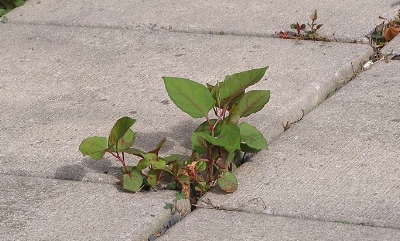
The vigorous potential of knotweeds is reflected by their ability to regenerate from rhizomes buried up to 1m deep and to penetrate asphalt 5cm thick.
The invasive root system and strong growth can damage:
- concrete foundations
- buildings
- roads
- paving
- retaining walls
- architectural sites
It can also reduce the carrying capacity of waterways.
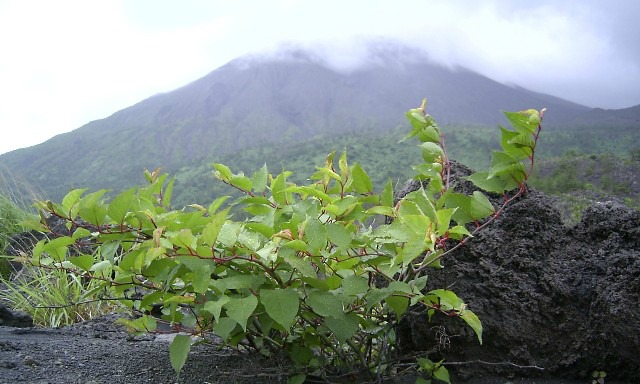
In Scotland and other areas of the UK, mortgages have been denied as a result of knotweed infestations, because of the plant's ability to grow through and damage concrete structures.
The ability to penetrate concrete and asphalt is due to the plant's native range on the high altitude slopes of Japanese volcanoes, where it regenerates after volcanic eruptions.
Knotweed in Victoria
In Victoria, 3 species of knotweed are declared as State prohibited weeds:
- Japanese knotweed (Fallopia japonica)
- giant knotweed (Fallopia sachalinensis)
- a hybrid of the 2 knotweed (Fallopia x bohemica)

There are three declared knotweeds in Victoria: giant knotweed, Japanese knotweed and a hybrid.
Japanese knotweed can grow one to two metres high. Giant knotweed can grow two to four metres high.
They may look the same but there is an easy way to tell the difference between the species. The leaves of giant knotweed have a heart shaped leaf base and Japanese knotweed, they have a flat leaf base.
The Japanese knotweed hybrid is a hybrid between Japanese knotweed and giant knotweed. It can have characteristics of both plants but often the leaves have a wavy edge.
The stems are hollow and can become woody when they're old. New stems and leaves may be red or purplish in colour.
Knotweeds flower over summer and all the growth dies back over winter and remains dormant under the ground. It comes back in spring.
The rhizomes or roots of knotweed can live for a long time under the ground. They can grow up to six metres deep and spread 20 metres sideways. They can grow from small cuttings. The roots are very strong and can penetrate through bitumen and concrete, and even into house foundations, causing serious damage
Identifying knotweed species
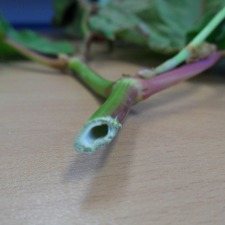
Knotweeds are semi-woody perennials. They flower in summer and most of the foliage will die back over autumn and winter.
Knotweed stems are hollow, bamboo like and can become tough and woody with age.
New stems may be purple-red in colour.
Japanese knotweed
Japanese knotweed leaves have a flat leaf base.
Japanese knotweed has white flowers, clustered in slender branch-like spikes.
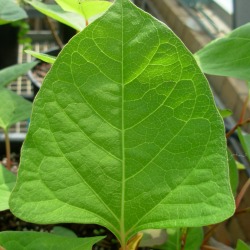
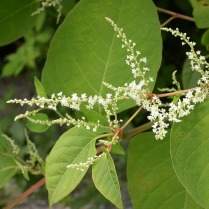
Giant knotweed
Giant knotweed leaves have a heart-shaped leaf base.
Giant knotweed flowers are green-yellow, clustered in loose, branch-like spikes.
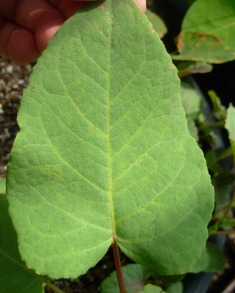
Hybrid knotweed
The knotweed hybrid will usually have leaves similar to the Japanese knotweed but can display characteristics of either species.
Look-alike species
Bleeding heart (Omalanthus populifolius) can often be mistaken for knotweeds. To tell the difference between the two, look for solid woody grey-green stems rather than hollow stems and yellow-green to red flowers that are 1 to 2 cm long. Also look for triangular leaves that turn red with age.
